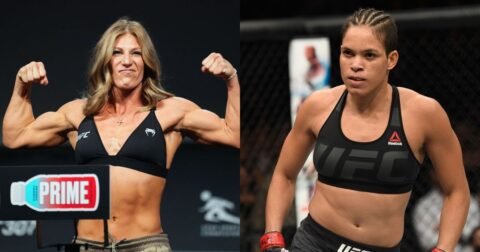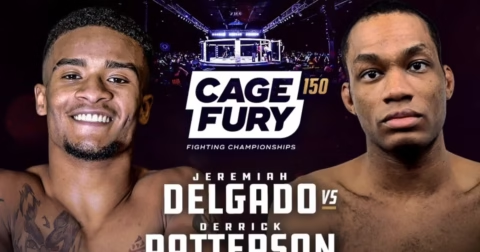For many combat sports fans, the excitement that revolves around a superfight is something that begins the moment the fight is announced. As soon as a date is announced and the matchup is confirmed, a litany of YouTube videos, social media shorts, and news pieces—detailing predictions from industry insiders, journalists, and fans who are engaging with the content online—emerges.
Within hours of a big fight being confirmed, the sports betting companies also detail their picks for the event. Although some MMA and boxing odds can be pretty thin, if we’re looking at a megafight, the type that only comes around once or twice a year, then the betting apps will look to offer as many markets as they possibly can. Some betting apps have even offered prospective markets on megafights that didn’t even happen, such as Jones against Aspinall.
The Smoke and Mirrors of Highlight-Heavy Training Videos
We live in a world where much of our content is condensed into shorter and shorter clips. There was a time when combat sports news was something you would primarily get in a magazine via a weekly subscription. Fight fans would sit down and read detailed pieces from boxing or MMA journalists, and they’d get their information in a detailed, structured format.
Once social media and the Internet entered the scene, the entire industry underwent a significant transformation. There was more media and, more importantly, it was cheaper and hyper-fixated on the topic at hand. Instead of having to wait a week for MMA news to see a few columns on a fighter, you can now go on YouTube or Spotify and listen to someone speak solely about that fight or fighter for three hours.
While initially this seemed like a positive, it quickly led to market saturation. We might all love MMA or combat sports, but we don’t have the time to sit around and watch three-hour podcasts about it every day. As YouTube and social media began to provide more concise, polished, and highlight-specific clips, this became the new way for people to watch highlights, especially for a casual audience.
Channelling into the Market Dynamics
The rise of social media sites like TikTok has highlighted just how much this paradigm has shifted. Full fight highlights are condensed into 30- or 40-second clips, post-fight interviews are condensed into soundbites, and 30-minute interviews are edited into ‘clippable’ viral moments.
Often, these clips are designed to become clickbait, completely misleading viewers and getting them to bicker amongst themselves in the comment section or on social media sites—all of this is engagement, and it’s good for business.
Therefore, the business of creating quickfire, attention-grabbing clips has become a currency in the world of combat sports. Highlight-heavy training videos are used in promotions; they capture the imagination and can offer an entirely different perspective on how fight night could actually unfold.
The Perils of Modern-Day Marketing
Over 100 million people watched the exhibition fight between a nearly 60-year-old Mike Tyson—who hadn’t been in the ring for 20 years—and Jake Paul—a YouTuber boxer whose incredible business acumen has convinced people that he is a legitimate world-level boxer.
Despite finding a litany of washed-up MMA fighters and losing to the only actual boxer who was anywhere near his age, Jake Paul is now talking up a fight with Olympic gold medallist and two-time world heavyweight champion Anthony Joshua.
Mike Tyson posted several different highlight clips in the build-up to his fight with Jake Paul. Remarkably, many people believed he would be able to physically last the distance against a man nearly 30 years his senior. Training clips led people to believe that a man who was the world heavyweight champion in 1986 would be able to knock out a 27-year-old low-level professional boxer in 2024.
The Importance of Doing Detailed Research
Unfortunately, this is a symptom of the world we now live in—chronically online influencers who grew up in luxury believe they can take up a combat sport on a whim and knock out bona fide world champions. It’s a fight that is now being seriously considered, and again, helping to fuel the disillusionment.
Although it’s not entirely to blame, the rise of highlight-heavy training videos is undoubtedly a contributing factor. People with a glancing interest in the sport are duped into thinking that knocking out cage fighters in their 40s is the same as fighting for genuine world title fights. When an army of social media marketers can drum up intrigue and hone in on the power of highlight-heavy training videos, it’s not a surprise to see some of the betting patterns we’ve witnessed in recent memory.
Blurring the Lines of Betting Markets
While bookies rarely allow people to get one over on them, they’re also driven by enormous demand. In the case of huge boxing crossover fights, such as McGregor vs. Mayweather, the demand is so high that casual fans from all over the world are drawn to them. Despite never lacing up a boxing glove for a professional bout, people were genuinely placing bets on Conor McGregor to knock out Floyd Mayweather.
At the time, the release of training footage, which showed McGregor getting the better of Paulie Malignaggi, was deemed a credible enough clip for people to think the Irishman had a chance. I remember people placing big money bets on McGregor by knockout, picking the round he would win it, and somehow drawing comparisons between Paulie and Floyd.
In a world of social media, it’s becoming increasingly complex to find credible and reliable opinions among fans who are constantly relying on smaller, and often more edited, clips as the foundation of their opinions. Savvy betting companies are reaping the rewards.
Final Thoughts
Ultimately, highlight-heavy training videos are one of the most effective forms of marketing in the social media age. For those looking to place a bet, especially in markets they don’t completely understand, or have a casual interest in, it’s easy to get drawn into clickbait headlines and small clips from training that make a fighter look invincible.
As is the case with any sports betting market, the skill is to do enough research, find trustworthy sources and opinions and ensure that it’s not a 12-second-long training clip that is the deciding factor in placing your wager.







